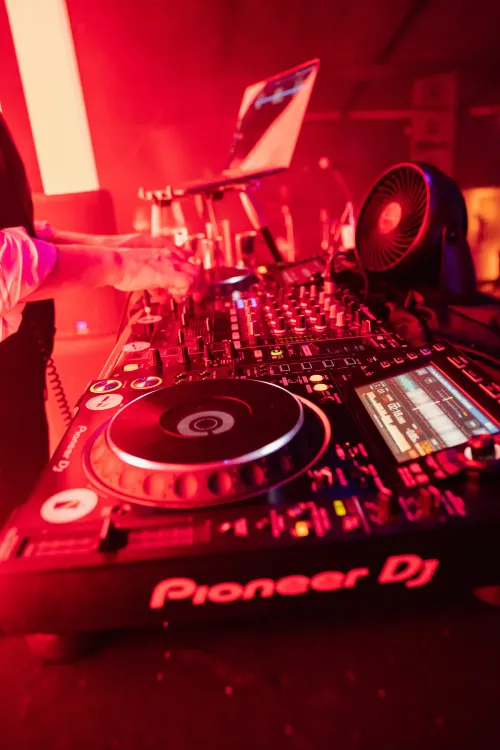MIDI, which stands for Musical Instrument Digital Interface, is a fundamental aspect of modern music production. It serves as the language that allows electronic musical instruments, computers, and other hardware to communicate. Understanding MIDI is crucial for anyone venturing into the world of music production, as it forms the backbone of electronic music creation.

MIDI Explained
MIDI operates as a digital communication protocol, providing a standardized language for musical devices. Unlike audio signals that represent sound waves directly, MIDI messages contain information about musical events, such as note-on, note-off, pitch, duration, and dynamics. These messages are transmitted in a serial format over a MIDI cable or via USB.
MIDI is employed in various ways in music production, enhancing the creative process and providing efficiency. Here's a breakdown of its primary uses:
- Instrument Control. MIDI allows you to control electronic instruments, such as synthesizers and drum machines. Instead of playing the actual sound, MIDI data triggers these instruments to produce the desired notes and rhythms. This flexibility enables you to experiment with different sounds and textures seamlessly.
- Sequencing. One of MIDI's powerful features is its role in sequencing. You can create intricate musical arrangements by arranging MIDI data on a timeline, specifying when each note or event should occur. This method forms the backbone of many electronic music genres.
- Virtual Instruments. MIDI is the bridge that connects your controller (like a MIDI keyboard) to virtual instruments within your digital audio workstation (DAW). This means you can play and record realistic-sounding instruments without needing the physical counterparts.
- Automation. MIDI data is not limited to note information. It also carries control messages for parameters like modulation, expression, and sustain. This allows for detailed automation, giving producers the ability to shape the dynamics and character of a performance over time.

How MIDI Works
Imagine you're in a band, and you want to coordinate your instruments to play a song together. MIDI is like a universal language that allows different musical devices to "talk" to each other. It's like a set of instructions that tell the instruments what to do, like when to play a note, how long to hold it, and how loud it should be.
MIDI doesn't actually send the sound of the music itself; instead, it sends individual messages with information about the notes, timings, and other details of the performance. This information is then interpreted by the receiving device, such as a synthesizer or a computer, which uses its own internal sounds to create the actual music.
MIDI messages can be broadly categorized into two types: channel messages and system messages. Channel messages are the most common and are used to control the basic aspects of note performance, such as when a note is played, how long it's held, and how loud it should be. System messages, on the other hand, are used for more global tasks, like setting the tempo or resetting all notes off.
Think of MIDI like a conductor waving a baton to an orchestra. The conductor doesn't actually make the sound of the music, but their gestures tell the musicians when to play, how loud to play, and so on. MIDI works in a similar way, allowing different musical devices to work together seamlessly.

How to Control MIDI
Now, let's delve into the practical aspects of using MIDI:
- Controllers. MIDI controllers, such as keyboards and pad controllers, allow you to input MIDI data into your DAW. These devices often have additional controls like knobs and sliders, providing tactile ways to manipulate parameters in real-time.
- MIDI Channels. Understanding MIDI channels is crucial. They allow you to send different streams of MIDI data to separate instruments within your setup. Assigning specific channels ensures that each instrument receives the intended information.
- MIDI Ports and Cables. Physical MIDI ports and cables connect your MIDI devices. USB has become a common connection method, simplifying setups, but traditional 5-pin DIN MIDI cables are still used, especially in professional studio environments.
- DAW Integration. Almost all modern DAWs seamlessly integrate with MIDI. You can create, edit, and manipulate MIDI data directly within your DAW's interface. This integration simplifies the production process, making MIDI an integral part of electronic music creation.

FAQs
Do I need special equipment to use MIDI?
While dedicated MIDI controllers enhance the experience, many DAWs allow you to input MIDI data using your computer keyboard or mouse.
Can I use MIDI with real instruments?
Yes, MIDI can be used with various instruments. For example, MIDI guitar controllers convert guitar playing into MIDI data, opening up new possibilities for guitarists.
How can I avoid latency issues when using MIDI?
Latency can be minimized by using a low-latency audio interface, optimizing your DAW settings, and ensuring your computer meets the system requirements for running MIDI-intensive projects.
Can MIDI be used for live performances?
Yes, MIDI is extensively used in live performances. Many musicians integrate MIDI controllers and instruments into their setups for enhanced control and flexibility during performances.
What software do I need to work with MIDI?
To work with MIDI, you'll need a Digital Audio Workstation (DAW) that supports MIDI functionality. Popular DAWs like Ableton Live, FL Studio, and Logic Pro are commonly used for MIDI-based music production.
Can I create my own MIDI patterns and loops?
Absolutely. Many producers create unique MIDI patterns and loops, either from scratch or by modifying existing ones. This allows for endless possibilities in crafting your own musical ideas and arrangements.








